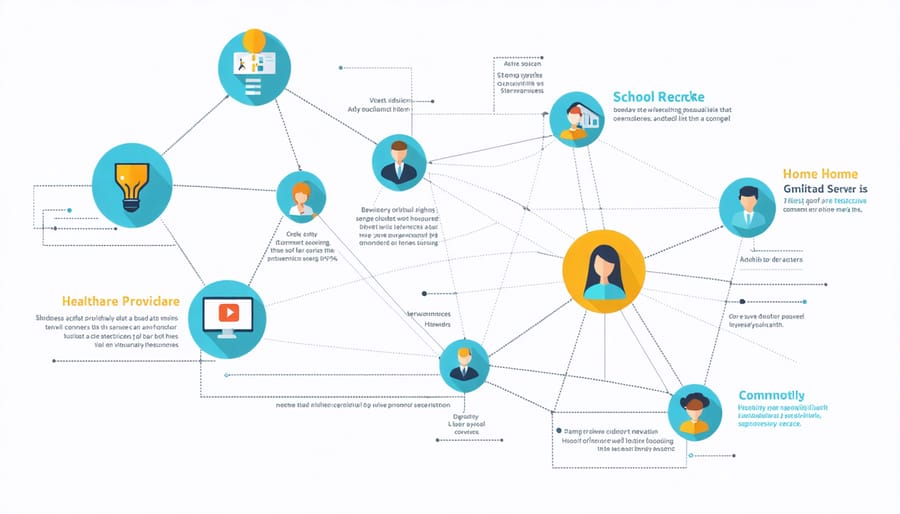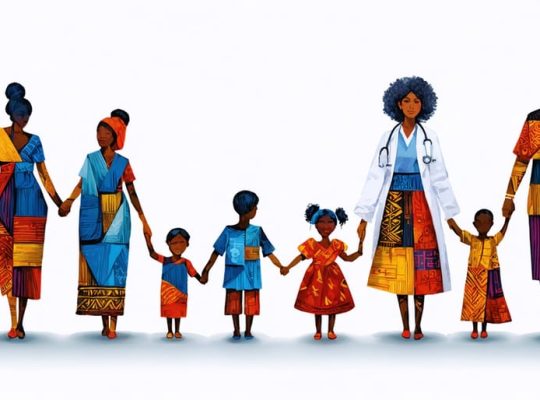When a child faces mental health challenges, community support services become an essential lifeline for families seeking comprehensive care and guidance. Community Support Team (CST) services represent a transformative approach to children’s mental health care, bringing together skilled professionals who work directly in homes, schools, and neighborhoods to support young people and their families.
These specialized teams, typically consisting of mental health counselors, social workers, and family advocates, provide personalized interventions that address both immediate concerns and long-term wellness goals. Unlike traditional office-based therapy, CST services meet families where they are, breaking down barriers to access and creating sustainable support systems within their natural environment.
For parents struggling to navigate their child’s mental health journey, CSTs offer more than just clinical support – they provide hope, practical solutions, and a partnership that empowers families to build stronger foundations for their children’s future. Whether dealing with behavioral challenges, emotional difficulties, or complex mental health needs, these teams work collaboratively with families to develop strategies that work in real-world situations.
What Are Community Support Team Services?
Core Components
Community support teams are built around several essential components that work together to create a comprehensive mental health support network for children and families. At the heart of these teams are licensed mental health professionals, including therapists, counselors, and social workers, who provide direct clinical support and guidance.
Case managers play a vital role in coordinating care and ensuring families can access all available resources. They work closely with peer support specialists – individuals who have personal experience with mental health challenges and can offer unique insights and encouragement to families navigating similar situations.
Family advocates are another crucial component, helping parents and caregivers understand their rights, make informed decisions, and effectively communicate their needs. Educational liaisons bridge the gap between mental health services and schools, ensuring children receive consistent support across all environments.
Crisis intervention specialists are always on call to provide immediate assistance during emergencies, offering both phone support and in-person response when needed. Together, these team members collaborate to provide holistic, family-centered care that addresses each child’s unique needs.
Team Composition
Community support teams bring together a diverse group of caring professionals who work collaboratively to support children and families. At the core of these teams, you’ll typically find mental health specialists, including licensed therapists and counselors who provide direct emotional and behavioral support. Social workers play a vital role in connecting families with resources and advocating for their needs within the community.
Many teams also include behavioral specialists who help develop and implement positive behavior strategies, and case managers who coordinate care and ensure services run smoothly. Depending on the child’s specific needs, the team might also feature occupational therapists, speech therapists, or educational specialists who can address developmental concerns.
What makes these teams truly special is their family-centered approach. They often include family support partners – individuals who have personal experience navigating similar challenges and can offer unique peer support. Cultural liaisons may also be part of the team, ensuring services are delivered in a way that respects and responds to each family’s cultural background.
The team composition remains flexible, adapting to meet each child’s unique circumstances and evolving needs over time.

How Community Support Teams Help Children
Direct Support Services
Community support teams provide a range of hands-on interventions tailored to each child’s unique needs. These services include one-on-one behavioral coaching, where team members work directly with children to develop coping strategies and positive behaviors. They also offer skill-building activities that help children manage daily tasks, improve social interactions, and build independence.
Team members often accompany children in various settings, such as school, home, or community spaces, providing real-time support and guidance. They might help a child navigate challenging social situations, manage anxiety during transitions, or practice new communication skills with peers.
Additionally, these professionals assist children with emotional regulation through evidence-based techniques like deep breathing exercises, mindfulness activities, and creative expression. They can also support academic success by helping children stay focused during homework time or developing organizational strategies.
Crisis intervention is another crucial direct service, where team members help children and families manage challenging situations in the moment, preventing escalation and maintaining safety. Throughout all interactions, the focus remains on building the child’s confidence and fostering independence while ensuring they feel supported and understood.

Family Engagement
Community support teams recognize that family involvement in mental health is crucial for achieving positive outcomes. These teams work collaboratively with families, viewing them as essential partners in the treatment process rather than passive recipients of services. They take time to understand each family’s unique dynamics, cultural values, and strengths while respecting their expertise about their child’s needs.
Teams typically engage families through regular meetings, both at home and in community settings, where they develop trust and open communication. They provide parents and caregivers with tools and strategies to support their child’s progress, offering practical guidance for managing challenging behaviors and promoting positive development.
Family engagement also includes helping parents navigate various systems, such as schools and healthcare providers, ensuring their voice is heard in decision-making processes. Teams celebrate family successes, no matter how small, and adapt their approach based on family feedback and changing needs. This partnership approach helps ensure that interventions are sustainable and meaningful within the family’s daily life.

Accessing Community Support Team Services
Accessing community support team services is a straightforward process designed to be family-friendly and responsive. The first step typically involves reaching out to your child’s primary care physician, school counselor, or local mental health agency. These professionals can provide an initial assessment and connect you with the appropriate community support team in your area.
Many communities offer multiple ways to initiate services. You can call your local mental health crisis hotline, contact your insurance provider for in-network options, or reach out directly to community mental health centers. Some areas also provide online referral forms for added convenience.
During the initial contact, you’ll typically speak with an intake coordinator who will gather basic information about your family’s needs and situation. They’ll guide you through any required paperwork and explain what documentation you might need, such as medical records or school reports.
Most community support teams aim to respond to new referrals within 24-72 hours. They understand that families often need help quickly and work to minimize waiting times. Many teams offer flexible scheduling, including evening appointments and home visits, to accommodate working families.
Remember, you don’t need to wait for a crisis to seek support. These services are available for both prevention and intervention, and early engagement often leads to better outcomes. If you’re unsure about whether your family qualifies, reach out anyway – the intake team can help determine eligibility and suggest alternative resources if needed.
Community support teams play a vital role in ensuring children and families receive the comprehensive care they need to thrive. These dedicated professionals work tirelessly to create a network of support that can make a real difference in your child’s development and well-being. Remember, seeking help is not a sign of weakness but rather a demonstration of strength and commitment to your child’s future.
If you’re facing challenges with your child’s mental health or development, don’t hesitate to reach out to your local community support services. Every family’s journey is unique, and these teams are equipped to provide personalized support that addresses your specific needs and circumstances. With their expertise and guidance, you can build a stronger foundation for your child’s success and create lasting positive changes in your family’s life.
Take the first step today – your community support team is ready to walk alongside you on this important journey.







